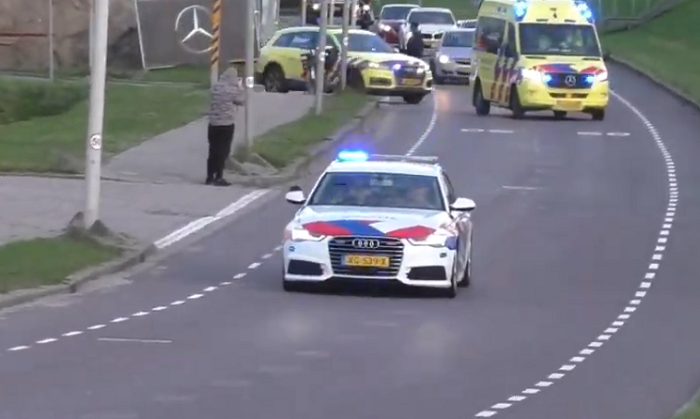Priority vehicle

All road users must give way to priority vehicles without creating a dangerous situation. For example, ignoring a red traffic light or using an emergency lane is not allowed!
Only if the motor vehicle carries visual and sound signals simultaneously is it a priority vehicle. If one of the two is missing, it is no longer a priority vehicle.
Sometimes priority vehicles drive between traffic. You have to make room to allow the priority vehicle to pass.
You can do this by swerve to the left or right, for example.
First, you have to look from which direction the priority vehicle is approaching. Then you must decide, for safety reasons, what is the best way to make room as safely as possible. Adjust your speed if necessary. It is also important to watch the other road users. When everyone is busy swerve to the right, you follow these other road users. If everyone is busy swerve to the left, you also swerve to the left. This also gives the driver of a priority vehicle a clear view of the safest route to take. You should do this without breaking traffic rules or causing danger.
Drivers of motor vehicles used for work to be specified shall display yellow or green flashing, flashing or blinking lights under circumstances to be specified. Drivers referred to in Article 29, first paragraph, shall in such cases display yellow or green flashing, blinking or flashing lights instead of blue flashing, blinking or flashing lights. The driver of the motor vehicle who is the first or only one to reach the spot to carry out the task assigned to him there may use blue waving, flashing or blinking lights instead of that light.
Article 1 of the RVV:
Priority vehicle: motor vehicle carrying the optical and sound signals referred to in Article 29.
Article 29 of the RVV:
- 1 Drivers of motor vehicles in use with police and fire brigades, motor vehicles in use with emergency medical assistance services, and motor vehicles of other emergency services designated by Our Minister shall display blue flashing, flashing or blinking lights and a two-tone horn to indicate that they are performing an urgent duty.
- 2 The drivers referred to in the first paragraph may display flashing headlights during the day in addition to the lights referred to in that paragraph.
- 3 Regulations may be laid down by ministerial regulation regarding the blue flashing, flashing or blinking light, the two-tone horn and the flashing headlights.
